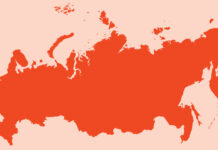By Jacob L. Shapiro
It’s becoming a weekly tradition: a Donald Trump misstep and a media explosion, and not always in that order. The Washington Post reported late Monday that U.S. President Donald Trump had revealed “highly classified” information to Russia’s foreign minister, and in so doing, Trump jeopardized the source of the information, as well as the intelligence-sharing agreement with the unnamed ally (since identified by The New York Times as Israel) that provided the information. According to the Post, Trump shared details of a specific IS terrorist plot, including the IS-controlled city where the information came from.
The media has proceeded to work itself into a frenzy over Trump’s misdeeds, but we cannot lose our minds each time some new scandal appears in the headlines. Geopolitical Futures tries to avoid wading into superficial and inconsequential internal politics. Still, there are some important things here that must be understood. First, there is an allegation that Trump has compromised U.S. access to intelligence from its partners. This is a serious allegation with geopolitical ramifications if true, so to the extent possible, its veracity must be evaluated. Second, the battle royal between Trump and the media is a symptom of a deep division within the United States itself. Trump’s election and inconsistency in American foreign policy are other symptoms of this divide. The divide and Trump’s handling of it are already affecting and will continue to affect U.S. foreign policy.
Trump and Russia
To understand the first issue, we must begin with some basic facts about the U.S.-Russia relationship. Trump has sought Russia’s help in combating the Islamic State – and Russia has played a major role in containing the Islamic State in Syria. Russia has a large Muslim population susceptible to radicalization. Russia has also been vulnerable to terrorist attacks, and specifically attacks targeting passenger airplanes, which was reportedly the subject of the information Trump shared. In October 2015, 224 people died when an IS bomb brought down a Russian passenger plane over the Sinai Peninsula. The United States outwardly protests Russia’s support for the Bashar Assad regime, and now even bombs the regime, but in the midnight hour, Washington is grateful that someone intervened and prevented the Islamic State from marching on Damascus, which was a very real concern as recently as 2015.
Where the United States and Russia do not see eye to eye is in Eastern Europe. Russia sees NATO and U.S. moves in Eastern Europe as violating post-Cold War assurances that the West would not extend military forces into former Soviet countries. The United States seeks to contain Russia and to preserve the independence of the states in its buffer zone to keep Russia weak and unable to challenge U.S. hegemony. For the Americans, the objective is to prevent conflict, not to start it, and Trump’s is not the first U.S. administration to try to reach an understanding that skirts conflict with Russia. One of the first things President Barack Obama’s administration tried was a Russian reset, with Secretary of State Hillary Clinton leading the effort. Trump’s supposed ties to Russia cast a pall over his outreach, but leaving aside the allegations and investigations, what matters is that Trump’s policy toward Russia is not strange or groundbreaking. It’s actually rather banal.
It makes sense, then, for Trump to try to build a basis for cooperation with Russia in the fight against the Islamic State. It even makes sense for Trump to brag about how good U.S. intelligence is in Syria to remind Russia that the United States is powerful and that it is watching what Russia does on the ground. The American media does not like that Trump invited the Russians into the Oval Office, but it seems petty to pick a fight over where Trump decided to meet them. Trump is guilty of a similar level of pettiness for not allowing U.S. photographers into the room. That is part of the Trump-media squabble. As for what transpired during the meeting, it appears that nothing Trump did was illegal, and by the Post’s own admission, some of what he disclosed was apparent when the Department of Homeland Security announced it was considering banning laptops and other large electronic devices on flights between Europe and the United States.
A House Divided
Upon deeper scrutiny, the issue is not necessarily what Trump has done or said. It is that Trump cannot trust even his inner circle of advisers. Whoever leaked the information was either in the room or had access to the minutes of the meeting. That means that someone with fairly robust access was willing to risk not just his or her own career but also the effectiveness of U.S.-Russia moves against the Islamic State, as well as U.S. credibility in the world and with allies that share intelligence. It makes Trump look bad, it makes the United States look worse, and it damages U.S. credibility for as long as the Trump administration is in power. That is a victory for the Islamic State, and for all would-be enemies of the United States.

U.S. President Donald Trump boards Air Force One at Andrews Air Force Base on May 4, 2017. BRENDAN SMIALOWSKI/AFP/Getty Images
The deeper problem for Trump is that he is too reliant on charisma. Max Weber, the father of modern social science, wrote in “Politics as a Vocation” that political power can be maintained three ways: by tradition, by charisma and by legality. Of these, Trump has only charisma. He does not have the power to persuade, nor can he guarantee the loyalty of his subordinates. The legislative branch and the judicial branch have already blocked his moves at multiple points. Many of the bureaucrats and technocrats have no love for him. Trump has risen to power by generating popular support from a significant faction of the population. It was enough to get him to power, but it is not enough to enable him to govern. That faction represents only about 35-41 percent of the electorate, based on his approval ratings. Many like to compare Trump to leaders like Duterte, Xi, Putin or Erdogan. The comparison is faulty for many reasons, but one of the least mentioned is that Trump is far less popular in his country than any of them are in theirs.
Which leads us to the second, far more consequential issue, one that we have written about at length but that is no less important for having been stated before. The core of Trump’s strength is the white lower-middle class. The middle class in general in the United States is under pressure and can no longer easily afford the basics of the American dream – a house, a car, the ability to provide for a family and even to go on vacation from time to time. According to the Pew Research Center, real wages for American workers have been flat or even falling for decades. A 2013 University of California, Berkeley study by Emmanuel Saez found that from 2009 to 2012, the real incomes of the top 1 percent in the United States grew by 31.4 percent, while the bottom 99 percent saw growth of just 0.4 percent. Trump leveraged enough of this discontent to propel himself to office.
That Trump’s proposed polices so far generally don’t help the very class of voters that brought him to power matters little. That is the telltale sign of a charismatic leader: a figure who is compelling enough that voters cast ballots against their self-interest. Trump capitalized on the feelings of American workers who believed that they were getting a raw deal and were willing to try something different, and Trump offered different in spades. For the white lower-middle class in particular, the fact that Trump didn’t much care whom he offended, and didn’t care for the identity politics that has mired the left in electoral irrelevance, was just further sign of Trump’s independence and willingness to go against the grain.
There is a fundamental, class-based division in the United States that has emerged between the working and lower-middle class on one hand and the urban, coastal, liberal elites on the other. The former are the Trump faction, and the latter are the Washington Post faction. The former want Trump to Make America Great Again. The latter oppose Trump’s moves for no other reason than that they come from Trump and that they find Trump repugnant. Trump’s faction so deeply distrusts the press that every time Trump comes under fire, it validates their perception of Trump as embattled because he is brave enough to fight for them. The Washington Post faction so deeply distrusts the Trump administration that it demands its newspapers make mountains out of molehills on a weekly basis to undermine Trump’s credibility. Trump is caught in the crossfire, a slave to his faction and constrained in what he can do by his need to placate it. The Washington Post is a slave to its faction, which buys more subscriptions because the Post is out for blood.
The result is much moaning and wailing and gnashing of teeth, the manufacturing each week of a new political crisis that will prove once and for all that Trump really is the boogeyman the media makes him out to be, or for Trump, that the media really is out to get him and that he will soon be exonerated of the allegations levied against him. This is what America’s Founding Fathers intended: They wanted paralysis in governance to defend against factions should they appear and claim power. The result, however, is bad for the United States in the short term. The fight against the Islamic State gets placed on the back burner for flashy headlines. Kim Jong Un’s claim that North Korea now has a perfect weapons system doesn’t even make page two. China pushes as hard as it can to erode U.S. influence in Southeast Asia, and Washington is too distracted to do much about it.
Trump may learn that the power of the presidency is to persuade, not to demand loyalty. Even if he does, his opponents are so deeply entrenched and committed to his failure that the question arises whether he can gather the momentum needed to reshape the relationship. He is deeply constrained because any move he makes to garner support from those outside his base jeopardizes his relationship with the base, and he’s constrained by the other factions because they care more about his demise than they do about the success of the executive. None of this is to say that the United States’ pre-eminence is at risk: The broad geopolitical forces that govern the behavior of nations tell us that the United States will remain the most powerful country in the world for many decades. But those same forces produced Trump and the current situation in the United States, and as long as the country is this polarized, the near term is going to be a bumpy ride, and the application of U.S. power abroad will suffer for it.








